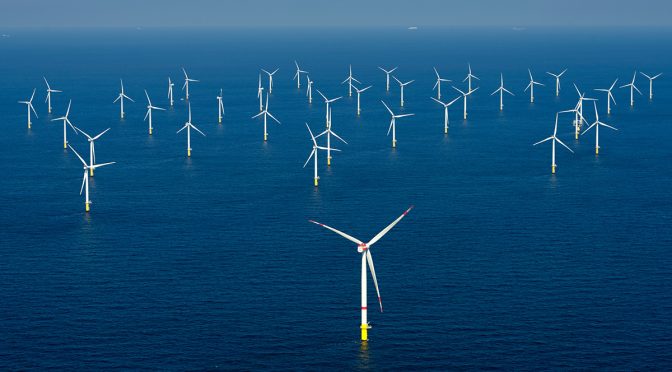MEGAWIND came into being in response to the need to improve monopiles, which is the most widely used type of foundation with the greatest market potential, so that they could integrate them with the new generation of large offshore wind turbines (+15 MW). Consequently, the main aim of the project is to develop innovations in the design and manufacture of the monopile itself, the transition part and the connection system between the two.
According to the latest WindEurope report, in Europe alone, offshore wind will increase from 28 GW installed by the end of 2021 to 135 GW in 2030 in order to achieve the decarbonisation targets set out in the Paris Agreement in this decade. This means a three-fold increase in the current annual installation rate from just over 3 GW to 10-11 GW. The wind turbines that will be used in offshore wind farms, which are increasingly more powerful, will be installed on different types of foundations, with monopiles being the most widely used, accounting for more than 80%.
As the size of wind turbines increases, so do the stresses that the foundations will need to withstand and, therefore, so does the size of the large parts that support them: monopiles, the bases that are driven into the seabed, and the transition parts, the connecting elements between the monopile and the wind turbine tower. All this means that there are a number of challenges in designing, manufacturing and installing these components and connection systems, and in the treatments and coatings that they need to operate properly in a marine environment.
In this context, MEGAWIND aims to improve the existing monopiles so that they can be integrated into the new generation of large offshore wind turbines, bringing together the knowledge of the partners in the consortium to develop innovative designs and manufacturing processes for the monopile itself, the transition part and the connection system between the two.
From the point of view of the manufacture of the monopile, the increase in the power of wind turbines to 15 MW means that these elements are more than 10 m in diameter and 100 m in length. Their manufacture by conventional welding methods requires very heavy, large steel plates, with the supply of these plates and their connection being one of the bottlenecks in the manufacture of large monopiles. HAIZEA WIND and IBERDROLA will work on adapting and validating a vacuum electron-beam welding method, which has never been used before for these types of connections. The feasibility of this method would significantly increase the rate of production.
The increase in the size of the monopiles is accompanied by an increase in the size of the transition parts and connecting flanges. These flanges, which are currently manufactured in a single forged piece, will be more than 10 m in diameter. NAVACEL will work on designing large flanges in sectors, which will bring a new supplier to a market with a high demand.
The bolted connectors that ERREKA will develop for future monopiles pose a challenge in terms of handling, assembly and tightening. Therefore, the company will investigate two ways of doing this in the project: (i) by developing tools and procedures to facilitate the installation and tightening of large metric bolts and (ii) by developing innovations in bolts, such as a combination of materials to provide the same mechanical properties, but reducing the metrics of the bolts. In turn, ERREKA will develop a virtual sensor system to be able to characterise the structural health of the monopile, the transition part and the tower, based on the load monitoring capabilities of the i-Bolt® bolts.
Lastly, GALVASALA, TTT GROUP and FEX. They will work on three lines to tackle the challenge of the survival of components in the demanding offshore environment: coatings for galvanised parts, heat treatments and corrosion protection by laser deposition. The bolted connections and the Boat Landing will be the critical elements to be studied, where new methods to prevent the material from corroding will be investigated.
The MEGAWIND project will have a positive effect on the supply chain around the partners in the project, such as increased activity in the port of Bilbao, and on the suppliers of raw materials for manufacturing components, and applying coatings to new components. In short, the project will contribute to the positioning of the Basque Country as a leader in the manufacture of large parts for offshore wind energy, by applying innovative technologies to develop these components.
The launch of the MEGAWIND project was held on Friday, September 23 at Tecnalia’s facilities, attended by all the members of the consortium, and it will last for 3 years.
Project funded by the Basque Government’s Department for Economic Development, Sustainability and the Environment (HAZITEK Programme).


